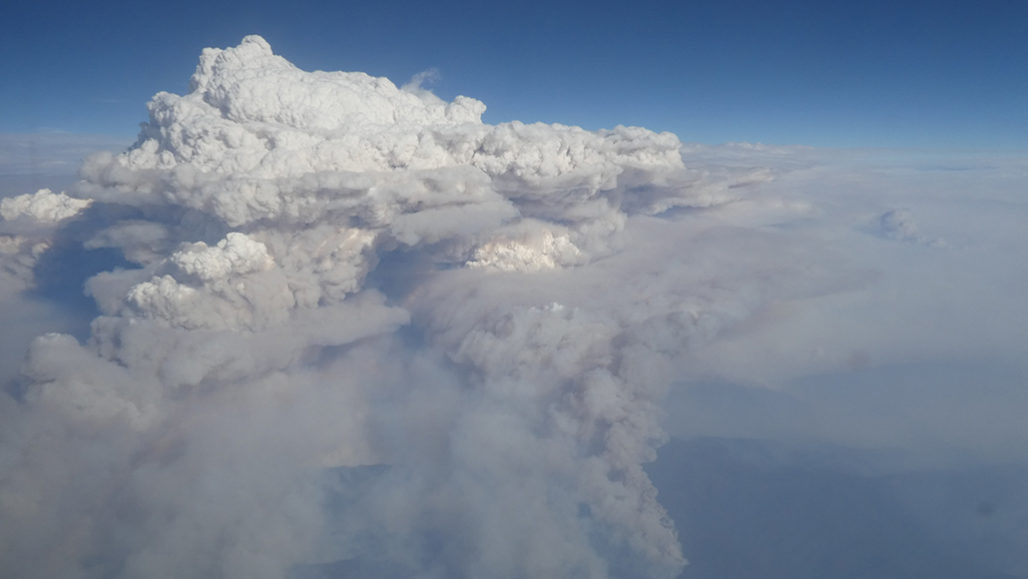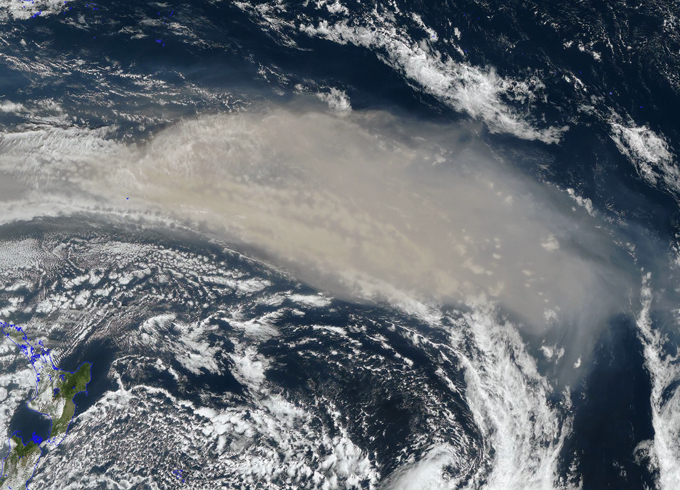Australian wildfires pumped smoke to record heights
Remnants of the excessive release of smoke still linger in the atmosphere

Australia's most recent bushfire season sparked the formation of pyrocumulonimbus clouds (one pictured). These clouds injected unprecedented amounts of smoke into Earth’s atmosphere. One long-lasting plume reached a record height.
Eigenes Werk/Wikimedia Commons (CC BY-SA 4.0)
Australia’s most recent wildfire season was so severe that smoke from the fires reached new heights in the atmosphere. And at times this lofted smoke behaved weirdly.
Bushfires raged across Australia from December 29 to January 4. The fires fueled huge thunderclouds. Scientists describe these as pyrocumulonimbus (PY-roh-kew-yu-lo-NIM-bus). The clouds drew between 300,000 and 900,000 metric tons of smoke into the stratosphere. That’s more smoke than seen from any previous inferno.
As winds whirled one large, long-lasting smoke plume around, it rose to record heights. Such winds have never been seen around similar plumes. Researchers reported their findings online May 30 in Geophysical Research Letters.
This vast puff of smoke spanned roughly 1,000 kilometers (620 miles). That’s about the width of Montana. It was one of the largest wildfire smoke plumes ever seen in the stratosphere, says Jessica Smith. She is an atmospheric scientist who was not involved in the study. Smith works at Harvard University in Cambridge, Mass.
The smoke didn’t mix with the air around it for months after it formed. That may be because the plume was shielded by winds that whirled around it at 54 kilometers (33 miles) per hour, the researchers say. The team is still trying to figure out what whipped up this newly discovered wind event.

Another striking thing was how high the smoke rose, notes George “Pat” Kablick III. Solar heating caused the plume to rise, he says. Kablick is an atmospheric scientist who works at the U.S. Naval Research Laboratory in Washington, D.C. In a matter of weeks, the plume climbed from about 15 kilometers (9 miles) off the ground to more than 31 kilometers high.
The rising plume lifted up record amounts of water and carbon monoxide. It also displaced ozone-rich air in the stratosphere. This smoke also could trigger chemical reactions that destroy ozone. That has concerned some scientists. They worry that too much smoke could damage the ozone layer, which protects Earth from the sun’s harmful radiation.
Future satellites or weather balloons could provide data on whether this has happened, says Pengfei Yu. He is a climate scientist at Jinan University in Guangzhou, China.
Observing the plume’s behavior may give also help scientists picture what might happen if far more smoke were pumped into the atmosphere — say, from a nuclear war.
Smoke released by wildfires in the Pacific Northwest in 2017 have already helped confirm computer models of nuclear warfare, says Alan Robock. He is a climate scientist at Rutgers University in New Brunswick, N.J. Those models predicted that smoke from burning cities would heat up in the stratosphere. That’s the layer of air above where Earth’s weather occurs.
If the heated smoke rose high enough, it could last for years and pose a real threat to the ozone layer. Scientists saw smoke from the 2017 wildfires rise up through the atmosphere just like that.
“We called that [2017 event] ‘the mother of all pyrocumulonimbus,’” Robock recalls. It just injected so much smoke into the stratosphere. The fact that the larger Australian smoke plume rose higher still, he says, suggests the computer projections are accurate.







